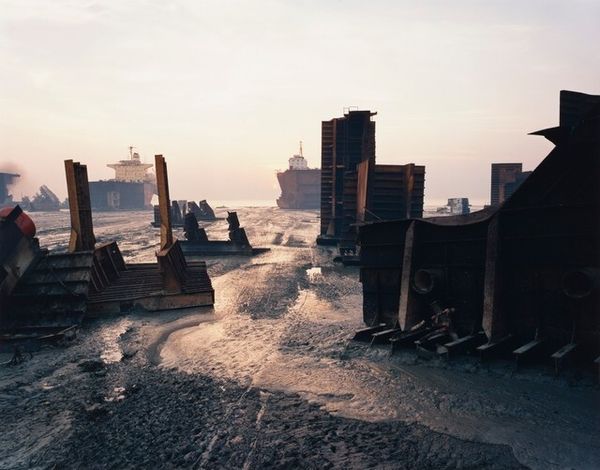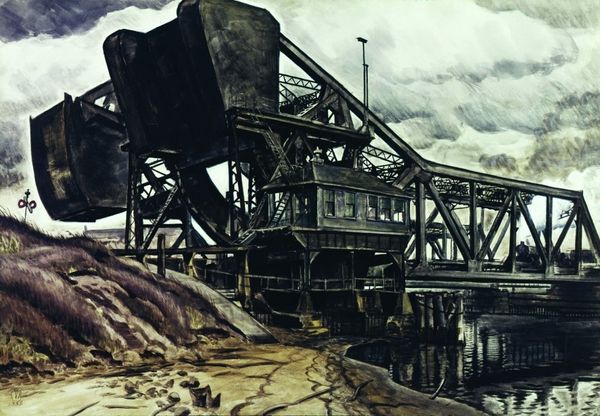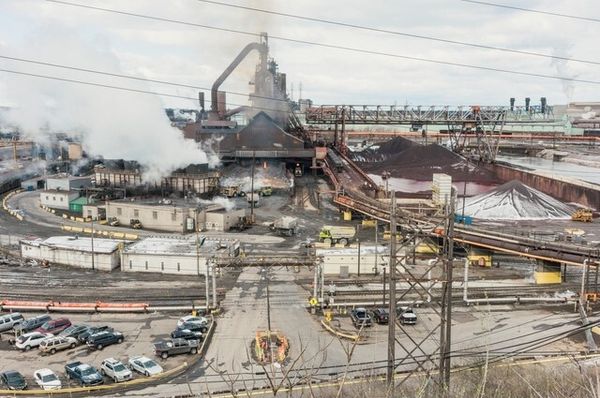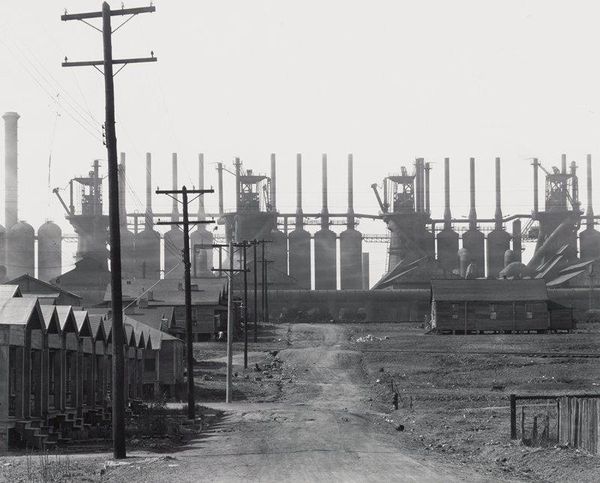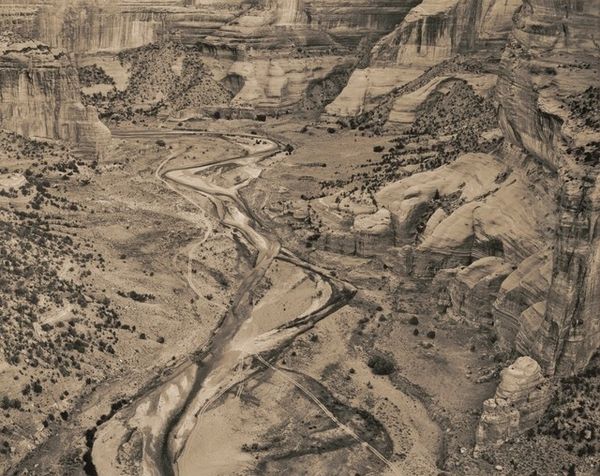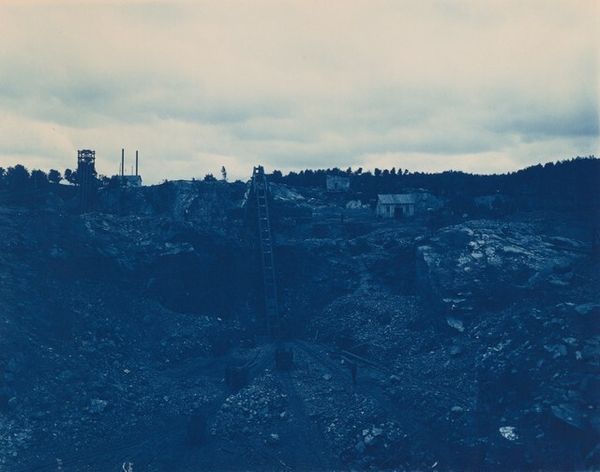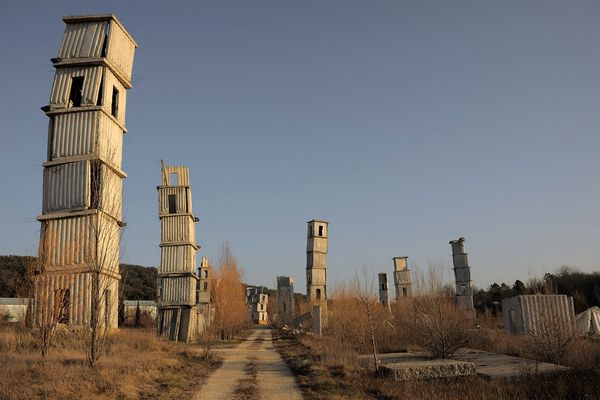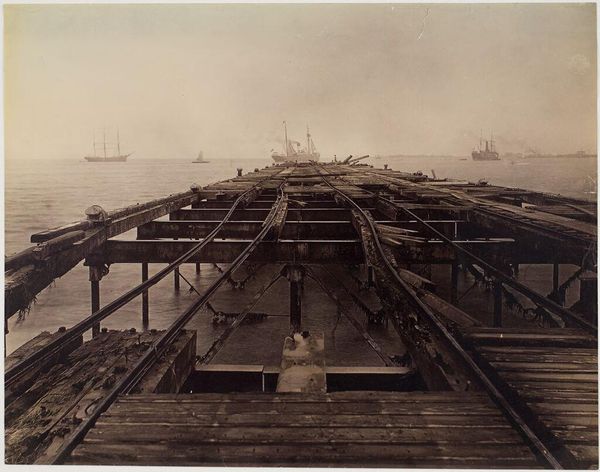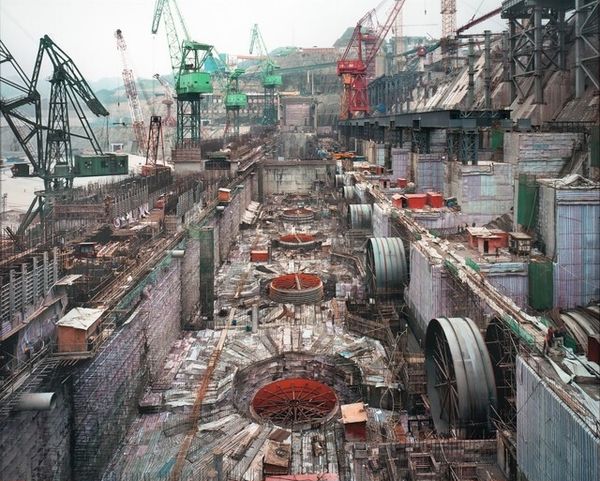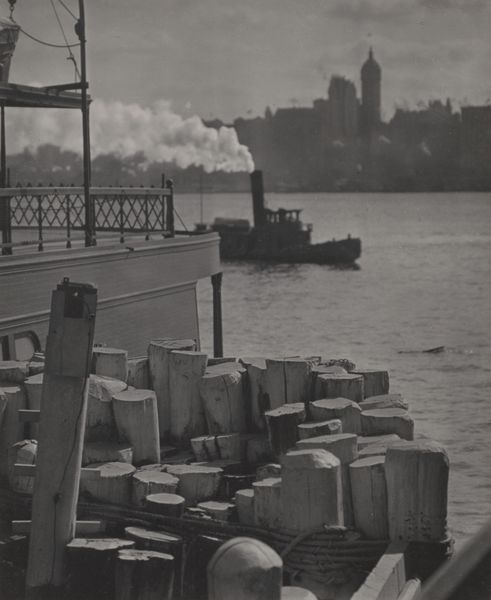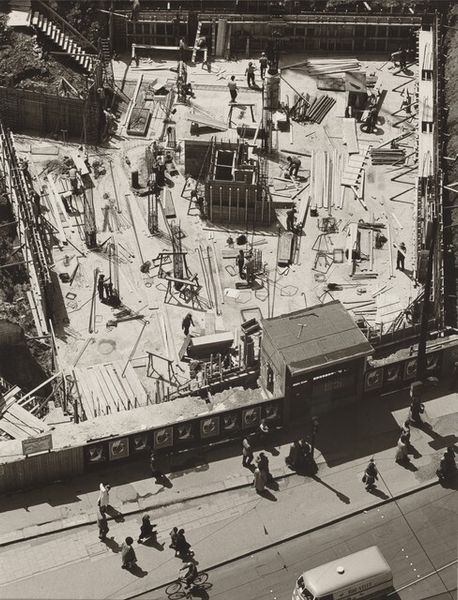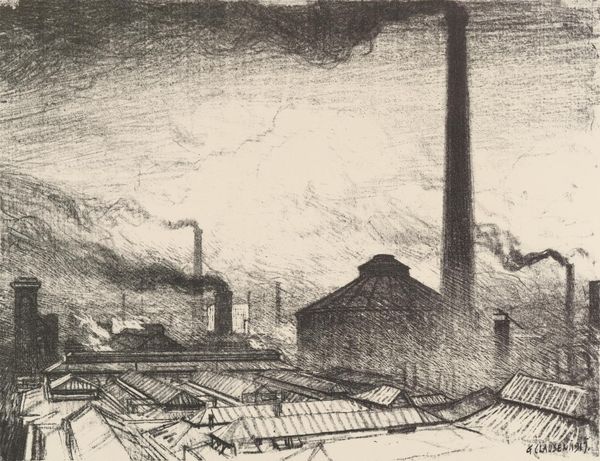
Dimensions: sheet: 68.6 x 86.4 cm (27 x 34 in.) framed: 94 x 111.8 cm (37 x 44 in.)
Copyright: National Gallery of Art: CC0 1.0
Curator: Edward Burtynsky's large-format photograph, "Shipbreaking #10, Chittagong, Bangladesh," created in 2000, confronts us with an unsettling vista. What's your initial read of the scene? Editor: My first impression is…apocalyptic. It's a graveyard of giants, these hulking ship carcasses. The rust colors dominate, like dried blood, and the sky is just this oppressive, bleached-out white. A feeling of abandonment just washes over you. Curator: Absolutely. Burtynsky’s work often grapples with the intersection of industrial processes and their environmental and social consequences. In this image, he captures the shipbreaking yards of Bangladesh, a place where massive vessels are dismantled by hand. It forces us to confront the lifecycle of these enormous machines of global trade, and what happens to them and the laborers when they become obsolete. Editor: I see those fragmented ship remains as a powerful symbol of industrial decline, maybe even a critique of capitalist excess. Steel, once a symbol of strength and progress, here it’s corroded, broken down, returning to the earth. The visual language is striking; the jagged edges, the repetitive shapes hinting at their original forms—do these forms connect to other symbolic visual elements? Curator: The photograph speaks volumes about labor exploitation and global inequalities. The workers in these yards often face hazardous conditions, dismantling ships with minimal safety measures. We are implicated, we who benefit from global trade, since we rarely consider its darker side, those unseen processes, like here the brutal dismantling. The visual impact should prompt questions about our own responsibilities within this global system. Editor: This connects to how societies choose to remember certain histories and forget others. The rusty ships, stripped of their original purpose, speak of lives and narratives discarded along with the metal. The ocean has always had such strong ties to cultural memory; in some ways these broken ships are the antithesis of that glorious symbolism. Curator: That is why this image is not only photographically stunning but ethically urgent. It disrupts the convenient narratives that allow us to ignore these injustices. By forcing the viewer to confront the stark reality of shipbreaking, Burtynsky provokes reflection. Editor: Indeed, its visual power underscores its vital message of responsibility, loss, and what we chose to leave behind. Thank you. Curator: And thank you for exploring with me what powerful art reveals.
Comments
No comments
Be the first to comment and join the conversation on the ultimate creative platform.
